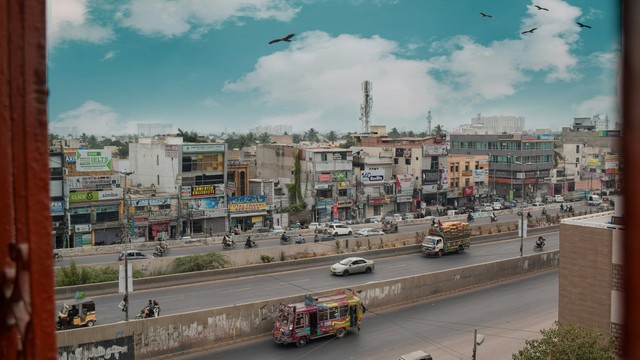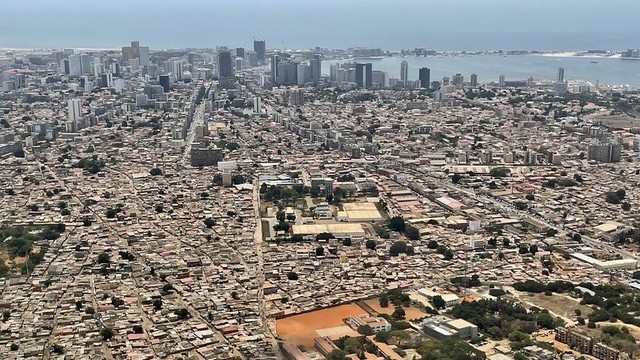Reframing the pandemic: COVID-19 relief by community networks tackles roots of poverty
A new study explores how urban community networks in Indonesia, Myanmar, the Philippines and Thailand responded to the COVID-19 crisis in effective and strategic ways. Experienced networks kept their focus on long-term structural change as they addressed urgent community needs, and so managed to strengthen, enlarge and legitimise an alternative ‘people's system’ that can address many aspects of urban poverty.



During the worst of the COVID-19 lockdowns, women in Bangkok's Bang Bon District gathered every morning in a community kitchen managed by the district-wide community network, to help cook 600 nutritious meals for vulnerable families in the district (Photo: ACHR)
Disasters have a way of heaping their troubles with disproportionate ferocity upon the poor. Coronavirus has been no exception, leaving most of the world’s poorest people – especially in cities (PDF) – without work and unable to meet their basic needs.
Existing problems, including crowded, poorly serviced living conditions and limited access to health care, increased poor urban communities’ vulnerability to the virus. Governments and aid agencies responded with large-scale programmes, but little of that aid has reached those most at risk.
A new action research study explores how some organised groups representing some of the poorest urban residents in Southeast Asia did not wait for government aid to trickle down: they used the urgency of the pandemic to come together and marshal whatever resources they could to address common needs in fresh, practical and efficient ways.
For these grassroots groups, the pandemic presented a rare opportunity to grow – an opportunity afforded only in a dire crisis which shakes everything up. Instead of a story of unmitigated suffering and loss, the pandemic has in some cases become a story of how an alternative, bottom-up approach to urban development has grown and become more recognised: a ‘people's system’.
Learning from community leadership
The study, facilitated by the Asian Coalition for Housing Rights (ACHR), used a tried-and-tested ‘action research’ approach that positions community organisations as principal researchers and creates space for South-South learning.
Already used to explore urban poverty lines (PDF), community finance (PDF) and food security, this action research methodology is important. Knowledge created this way adds to a growing body of analysis and reflection on different aspects of urban poverty – and solutions to it – by the people who experience poverty every day of their lives.
The study turned a spotlight on innovative COVID-19 responses led by community networks in four countries:
- Jaringan Rakyat Miskin Kota (the ‘Urban Poor Network’) of kampung-(community) based cooperatives in Jakarta, Indonesia
- The Women's Saving and Development Network (PDF) in Yangon, Myanmar
- The Homeless People’s Federation, working in several cities in the Philippines
- Urban community networks in cities across Thailand.
During the study, the networks overcame COVID-19 restrictions by becoming familiar with Zoom and PowerPoint to present and discuss their projects, which included:
- Community kitchens and food distribution to feed hungry families during the lockdowns
- Community gardens to provide nutritious food and extra income
- Livelihood and community enterprise initiatives to boost incomes, and
- Mitigation and health measures to slow the spread of the virus, such as setting up quarantine centres to help keep infected community people out of the hospital.
By meeting regularly, presenting their work to peers in other places, and learning from each other’s experiences, the networks in all four countries were able to reflect together on the role the pandemic has played in the progress of their community movements.
What we learned: creating opportunity from crisis
Despite the limitations of online meetings, the discussions were lively and some striking ideas emerged.
1. Communities did more with less.
With modest but flexible funding, communities found thrifty and creative ways to stretch limited resources to reach more people and deal more holistically with the crisis.
As formal relief systems fell short, the pandemic activated the ‘people's system’, whereby even COVID-19-hit communities went into the giving and helping-each-other mode – particularly the women. For example, 60 community kitchens in Bangkok received funds to cook 110,000 meals during the pandemic (at US$1 per meal), but were able to cook about 300,000 meals with that budget.
2. Networks used the virus as an opportunity to go beyond just relief.
The community-managed COVID-19 projects built on the collective force that already exists in communities. Mature networks consciously used the crisis to revive and expand their connections and strengthen their larger community movement.
For example, Jaringan Rakyat Miskin Kota – a community network in Jakarta – used its COVID-19 support to strengthen and expand the community-based cooperatives as multi-purpose support systems for the poor, as part of their larger campaign to obtain long-term collective land tenure and secure housing.
3. The COVID projects hinted at a different kind of urban future.
The responses sparked ideas about sharing and greening our cities, caring for each other, and meeting our needs for housing and food in ways that are collective rather than profitable.
For example, community gardens supported immediate food security, but also allowed community networks to build positive new working relationships with local governments and landowners, opening doors to negotiate use of vacant land for public purposes like food production and housing.
The power of action that is collective and strategic
Perhaps the most interesting finding was that while community networks were addressing specific and urgent local needs, the pandemic projects they designed also strengthened the ‘people's system’ at community and network levels, and boosted community groups’ relationships with government and other local stakeholders.
Unlike top-down pandemic interventions, these projects furthered long-term urban development aims.
They worked at the structural roots of poverty by keeping focused on getting secure land for housing, using public land for public purposes, building stronger and more inclusive citywide networks, and creating new collective structures that belong to the poor and can help them meet basic needs they can't meet as individuals.



